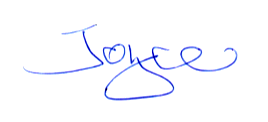We tend to think about creativity as a young person’s sport. Something that is either innate or learned well before one hits thirty. This trope relies on the indelible image of the prodigy, Mozart or the English Romantic poets Byron and Shelley. Recently, Beth Harmon, the central figure in Netflix’s The Queen’s Gambit, captured our attention and our adulation with her prowess at the chessboard beginning at age nine. Beth is the ideal storybook image of the young genius, having lost her mother in a car accident, only to be housed in an orphanage where the custodian teaches her chess.
In Emily Urquhart’s engaging new book, The Age of Creativity, she tackles the slippery topics of memory, ageing and creativity and how, in real life, it flourishes. The book is about her father Tony Urquhart, the illustrious Canadian painter and sculptor, whose creations have mesmerized art lovers for decades. She delves into why it has long been thought that artistic output declines as we age. When Emily and her family celebrated Tony’s eightieth birthday, she found it remarkable that, although his pace had slowed, he was continuing his daily art practice of drawing, painting and constructing large-scale sculptures, and was even innovating his style.
Was he defying the odds, or is it possible that some assumptions about the elderly are flat-out wrong? As Emily and Tony looked into a mirror together this is what she saw:
“A craft person whose skills were honed, whose well-spring of talent was bolstered by nearly a century of practice, placing him at the pinnacle of his artistic life….My father was but one example of the longevity of the creative spirit, alive in all of us.”
These words are at the heart of Urquhart’s book: how we obscure and minimize the value of the hard work, the ups-and-downs and the longevity of the creative process as we grow older. For the older readers of The Age of Creativity, her observations will lift the spirits, renew the impulse to create, or act as a guide to new creative endeavours.
I first met Emily when she was four years old. (Today she in her early forties with children of her own.) Tony and her mother, Jane, the beloved Canadian novelist, and their young daughter had just returned to Waterloo, Ontario from Tony’s sabbatical in France. Emily was charming and shy. She is the couple’s first and only child together. That night I’d been invited to dinner with my ex, a poet, who worked at the University of Waterloo as did Tony. Jane, who was launching her career as a writer, was significantly younger than her husband as I was much younger than my companion. We struck an immediate friendship based on our shared interest in literature, our partner’s solidly advanced artistic careers, and I suppose, our eagerness to find a friend our own age. Jane was lively and fun to be around. She tap-danced and knew the lyrics to Broadway musicals. I was often going on about the latest piece of hard political reporting I’d read in the Globe and Mail, but we managed to connect.
During the years, Jane went on to publish seven acclaimed novels, to win and be nominated for the headiest prizes in Canadian literature. Her books are published and translated around the world. It took me a great deal longer to find my voice as an author of fiction, although the creative life was there for me to witness, in every corner of the Urquhart home.
What I recall about Tony was how supportive he was of his wife’s early creative work, and how diligently he labored at his own art. When the family moved to the country outside of Waterloo, Tony transformed a shed into his studio. Most days when I visited Jane, Tony was nowhere to be seen. He was in his studio painting, as he did seven days a week. He never stopped; he never lost heart. Age not only didn’t slow him down, it gave him the energy to improvise and to improve his craft.
Today a painting of Tony’s hangs prominently in my living room. I never tire of gazing at it, although its meaning has changed for me. Forty years ago, it was a painting of urns in a French graveyard. Back then I concentrated on the colour and shapes in the painting. I hadn’t been to France when I received this beautiful painting as a birthday gift. When I did travel to France, I saw the painting differently. It became a picture of the French way of life. Now I see it almost entirely differently once again. Of course, it’s about death and the beauty that remains after one leaves this earth, or as Tony paints it, as one becomes a part of the earth.
It’s also a reminder that creativity changes, not diminishes as we age. Retirement might be the perfect time to begin a journal, to start recording your thoughts as you grow older. Or it could be the moment to launch a creative project, the painting or writing you’ve always wished to try, the musical instrument, or the potter’s wheel you have a hankering to master.
It’s all there for the taking. As most of us spend our days at home weathering the great pandemic of 2020, awaiting the vaccine, I can’t think of a better way to maintain our spirits than by releasing that part of our hearts and minds that lean toward creativity.
Happy holidays!
 |































